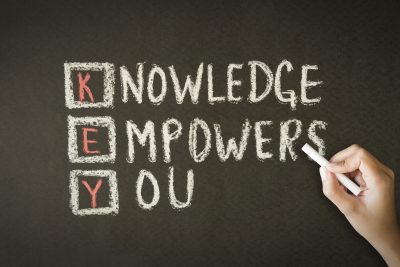What is Universal Design for Learning (UDL)?
Currently, the focus of education is to prepare all students to be experts in their chosen fields of study, turning the early learner into a lifelong learner building on individual needs and strengths to accomplish this goal. Universal Design for Learning (UDL) helps educators by providing academically structured framework on which to create curricula that meets the varied needs of all learners. With a guidance to curriculum formation and implementation, greater variety of instruction methods can occur to engage and motivate students to learn. Educators have more freedom in instructing students when the typical methods did not provide optimal educational experiences.
The UDL Guidelines are organized by 3 guiding principles:
Principle 1: Multiple Means of Representation
Provide options for perception, language and symbols, and comprehension.
Principle 2: Multiple Means of Expression
Provide options for physical action, expressive skills and fluency, and executive functions.
Principle 3: Multiple Means of Engagement
Provide options for recruiting interest, effort and persistence, and self-regulation.
Each area has built in checkpoints moving away from the one-size-fits-all mindset to providing optimal teaching experiences through auditory, visual, and hands-on practical suggestions. Checkpoints also provide guidance on accessing materials, assessments, enhancing value of learned material, expanding coping skills, as well as reflection on the work done. UDL includes evidence-based resources and examples to guide implementation, ensuring that what is taught and how it is presented will have an impact on the students. Teachers can benefit from UDL as it provides guidance on organization of the classroom and curriculum, reducing distractions, increased use of technology to enhance learning, and how to educate students with disabilities.
Guiding Principles that propel the development of UDL are:
Principle 1: Equitable use—The purpose is ensure the design is useful and marketable to diverse students, including those with disabilities. Providing equal access is not enough, teaching students of all abilities and propelling them to excellence must be the goal of education.
Principle 2: Flexibility in use—The curriculum’s design must accommodate the wide range of abilities and preferences. Disabled students, fast or slow learners, can all benefit as the range of education will match the abilities of each individual. Students can learn how they need to learn.
Principle 3: Simple and intuitive use—Curriculum should be easily understood regardless of the user’s experience, knowledge, language skills, or current concentration level. Education should be easy with clear guidelines, steps, and protocols. By removing the guesswork out of teaching, time can be saved because all the steps are included and a solid academic foundation is built from the beginning so that all students can excel.
Principle 4: Perceptible information—Information is effectively communicated to the learner, regardless of the student’s needs, challenges or disabilities. This can provide comfort to families knowing that students that learn differently will have access to the curriculum provided to the student in ways that use their strengths to learn.
Principle 5: Tolerance for error—The design minimizes hazards and the adverse consequences of accidental or unintended actions.
Principle 6: Low physical effort—Curriculum should be designed so that it is efficient and comfortable without being tiring for the student, parents, and educators.
Principle 7: Size and space for approach and use—The focus of the design will not limit the size and space necessary for the students to learn, but will be accessible for all individuals, including those with body size, posture, or mobility concerns. This assurance provides solutions for approach, reach, manipulation, and use in order to enhance the educational experience. Access to everything will be available and provided for all individuals, which should eliminate discrimination concerns.
Information adapted from: Principles of Universal Design, version 2.0 (Center for Universal Design, North Carolina, 1997)
UDL provides excitement and hope for parents and educators that have struggled with students that are atypical learners. The one-size-fits-all approach to education does not work for all students. With the ability to adapt an inflexible curriculum, all elements are adapted for any student that may learn differently, requires real life examples, hands on experiences, or who needs more reinforcement to understand concepts.
With the curriculum intentionally written to be all inclusive, a better learning environment can be implemented, as stresses of last minute adaptions are eliminated. The evidence-based adaptions are planned from the start and incorporated in to daily teaching for all learners. The UDL will not take the place of the IEP or the 504 Plans, but will aid in the implementation of accommodations and modifications.
Educating disabled students with their peers can be promoted with the adoption of UDL standards because it allows for multiple levels of teaching and learning of the same subject in the same classroom. UDL standards will not replace resources or other specialized education classrooms, but will enhance the teaching done in the alternative environments when placement away from the general education classroom is required by the IEP.
Students, parents, and educators will benefit by UDL. Students will be prepared for the future by learning how they learn best, becoming academic experts as they prepare for college or work life. Parents can take comfort in knowing that all children will be provided access to education in the ways necessary for each student to learn. This can be especially comforting for those parents who have students that learn differently.
As educators work to improve their curriculum, their teaching skills will be strengthened and the adaptation of curriculum will be done in advance, saving preparation time. Educators will also gain confidence when teaching students with varying skills, abilities, and learning levels; making them experts at teaching a variety of individuals.
“Working Together with Military Families of Individuals with DisAbilities!”

